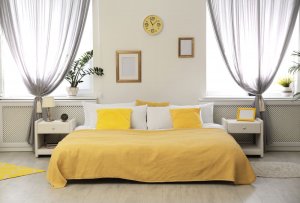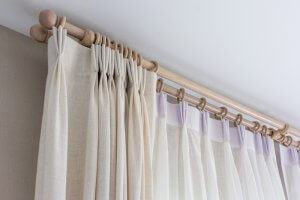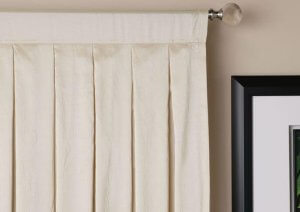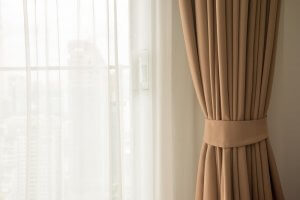Classic Drapes: All the Types and Styles

Today, we’re going to be talking about one of the most important parts of decoration and interior design. There are all kinds of ways to cover windows, from fabric drapes to blinds, to oriental panels. We’re going focus specifically focus on classic fabric drapes, their types, styles, and how to use them properly.
Drapes have the amazing ability to dress your windows up, let light filter into your rooms, and act as a unifying element for the decorative style in any room. They add lots of personality. What better reason to learn more about all the different kinds, so that you can choose the perfect type for each room in your home?
This is also why it’s important to understand the production behind each type of drape. From the most simplistic, to the most sophisticated, any drape you choose will play a starring role in a room and highlight the area by the windows.
You should also remember that the specific type of drape you choose will depend on the room you’re using it in, and that can also influence your fabric choice. You wouldn’t use the same drapes in a kitchen as you would in a living room.
Classic drapes
Smooth

These types of drapes have no folds sewn into them. What that means is that the fabric can stretch as far as it can go along the length of the wall you hang it up in front of.
The amount of fabric you need is the exact same as the distance you need to cover. This type is perfect for a bedroom, or in combination with a set of curtains.
This form of classic drapes is best when you want something to help keep your room darker so that you can get a better night’s sleep. That means this type of drape should be made with dark, thick fabrics that won’t let too much natural light in.
Simple pleats

This is just about the most classic and well-known type of drape. These come with consistent, simple pleats so that when you hang them up, they look like a unified, pleated fabric. When using this type of drape, you need fabric twice the length of the area you want it to cover.
These tend to be much more aesthetically pleasing than the first type of drape because they highlight the windows and fabric they’re made of. This type is great for lighter drapes and ones that are mostly for decoration.
Plateau drapes

With this type, the drapes have a fold shape that looks like a series of plateaus. These give you a lot of room to work with because you can play around with different fold lengths. How wide or narrow you want the plateaus depends on the look you want to create and the fabric you use.
For lighter fabrics, you should use narrow plateaus. For wider plateaus, you’ll want to use a thicker, heavier fabric. Like the last example, you need twice the amount of fabric as the distance you need it to cover along the wall once it has been plateaued.
Grommeted – the king of classic drapes

Grommets are the metal rings at the top of the drapes, where you thread the curtain rod through. Those rings make it much easier to open and close the drapes. But you will need a curtain rod, rather than a rail, and one made of metal or wood.
The main advantage of these is that there are a lot of drapes in stores that come with grommets already in them. They also tend to come in standard measurements for windows so you shouldn’t have any major problems finding some to suit your home.
For bigger windows, you’ll need at least four of the ones you find pre-made in stores, or you’ll need to get yours tailored to fit the space.
Wavy drapes

These types of classic drapes use the same basic principles as the ones with grommets. The final result looks absolutely gorgeous, elegant, and sophisticated. Another benefit of these is that you can use a rail to hang them up.
Use classic drapes in your home!

Now that you’ve learned all about the different types of classic drapes, you just need to pick the ones that are perfect for you. Think about the decorative styles in your rooms and match the drape colors with the rest of the space.
Keep in mind that the drapes you choose say a lot about you and your personality. Drapes are super practical when it comes to adding colors or contrasting colors in a room. If you want a more classic style for your home, you should opt for the simple pleated type.
If your home is more contemporary or sophisticated, don’t be afraid to choose wavy, grommeted, or plateaued drapes. They’ll add just the touch of elegance you were looking for in your home.








